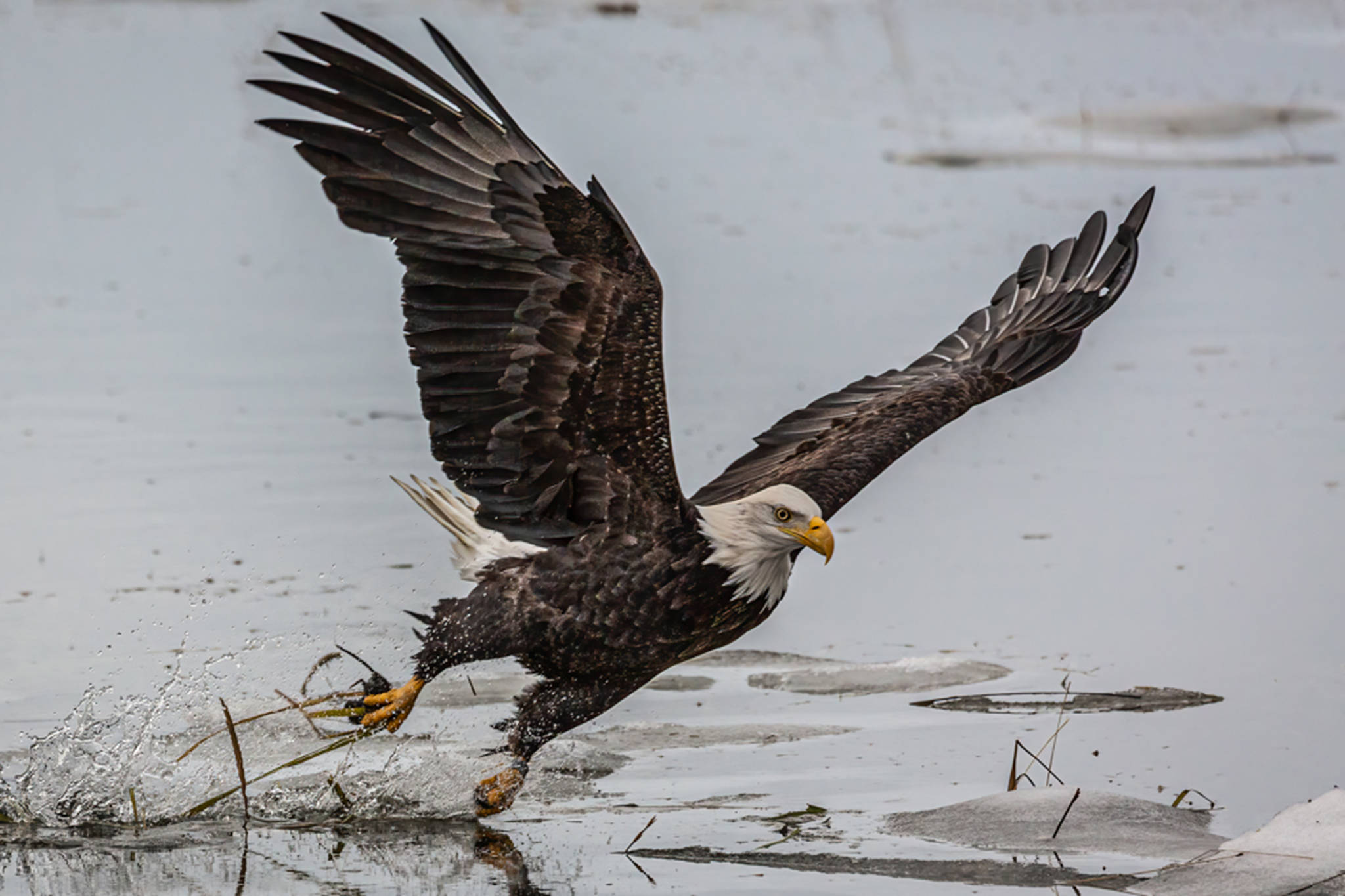By Heather Holt
Shooting the adjective: This is the jolt that causes people to stop and look, to really look at your photo.
To maximize your success in capturing great photos, it is helpful to start by mastering the art of shooting birds in flight to train your speed. A moment of indecision or hesitation may be the difference between that great shot and a near miss.
Let’s begin by focusing on your non-negotiables — your camera and your lens.
This crash course begins with your camera’s AF Point Selections that provide you with focus point assistance. When shooting large mammals, or birds in trees, Single AF or Spot AF works perfectly well as you are able to lock on and keep the point on the eye. However, it doesn’t work well for birds in flight because you have to hold that little spot exactly on the eye and that can be very difficult with birds.
For slower-moving birds, such as eagles and swans, a good option would be AF 4 point. This selection allows you to target the bird that you want. AF 8 point is better for faster or erratically moving birds such as the tern, our local blue jays, and smaller birds at the feeders. The 8 point allows you to target a specific bird as well, but you get more focus point assistance for those quick, uncertain flight patterns. I highly recommend looking at YouTube videos geared toward setting up your specific camera.
For focus tracking the camera analyzes the subject movements and predicts where to focus. You will need to choose either from “one shot,” which is best for still subjects such as stationary birds, to “AI Servo,” which is the best option for birds in flight. In this setting you will also want to choose high speed continuous which allows your camera to take continuous images as fast as possible (or until your buffer is full). “AI Focus” is a hybrid between the two and, in my opinion, doesn’t work well for any type of photography.
The other non-negotiable is your lens. There are IS/VR/VC modes that are used to control vibration reduction and image stabilization and are found on the lens itself. For birds in flight VC mode should be on and you have three choices — 1, for stationary subjects; 2, for birds in flight/panning (use); and 3, for really low light and no tripod. Switch on autofocus for birds in flight and for focus limiting use the furthest distance to infinity so your lens has less field to search and will focus on your subject quicker.
Finally, a few other essentials for successful birds in flight captures.
Your shutter speed needs to be balanced with available light, the ISO you are willing to use — I use auto but watch it! — and the aperture. For large, slow,or distant birds start at the lower end at 1/1600th of a second and for the small, fast birds, close range or flying at the camera use the upper end of 1/3200th-1/4000th of a second. At F8 you get extra wiggle room for focus but somewhere between F4-F8 is a great starting point along with AUTO ISO. It is all about what you are envisioning for your photo. Happy shooting!
• Heather (Burford) Holt is a fourth generation Juneauite who offers local and flyout photo workshops designed to improve camera skills while capturing photos in the Alaska wilderness. She can be reached at flyingakcaptured@gmail.com, or visit her website at http://www.flyingalaskacaptured.net/. “Focal Point” is a column meant to provide inspiration, education and opportunity for all with an interest in photography.

